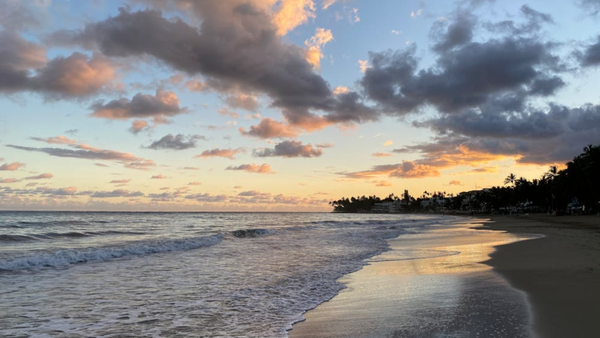A quick look at the nameplates in India’s neighbourhoods will show you that caste is the primary language of spatiality in Indian cities. Despite such failings, B.R. Ambedkar rejected village life and encouraged Dalits to move to the city. Ambedkar said that an Indian village is “the working plant of the Hindu social order” and argued that it is the ideal place to understand caste. Gandhi, however, saw the Indian village as a self-reliant, equitable and a just non-violent order, and argued for the decentralisation of power to the villages through Gram Swaraj. In strong opposition, Ambedkar believed that the idealisation of Indian village life emerged either from the colonial romanticisation of the rural population or from the desire of Hindus to retain caste domination.
In the Constituent Assembly, Ambedkar opposed the idea that villages should be recognised as autonomous administrative units and felt relieved that the Assembly rejected the idea. “For the untouchables, there could not have been a bigger calamity,” he wrote.
Urbanisation and Ambedkar’s belief
In the process of urbanisation, Ambedkar saw an opportunity for Dalit liberation. He believed that the systems of caste oppression that thrive in Indian villages become weaker in cities. These included segregation of Dalits into ghettos, restrictions on economic activities, and denial of land ownership. Jyotirao Phule had also admired city life for being liberal and enabling him to earn a living. At the core of the liberating power of cities, for Ambedkar and Phule, was the opportunity to become anonymous. Cities, in principle, offer an opportunity to become a stranger among a sea of strangers and transition from a caste-based order to a class-based order. One defined not by genealogy but by accumulation of resources or capital.
Here, it is important to acknowledge that Ambedkar had seen the ways in which caste adapts to urbanisation. In Waiting for a Visa, Ambedkar reflects on his struggle to find a house in Baroda.
While modern urbanisation was fuelled by a skill-based transition to economy, i.e., industrialisation, the dominance of caste over skill had also become clear to Ambedkar when even skilled Dalits were not allowed to enter the weaving sections of textile mills. Despite these experiences, Ambedkar saw urbanisation as a liberating force. However, after a century of Ambedkar’s struggles with renting a house in Baroda, caste remains the spatial logic of Indian cities.
Language of ‘purity-pollution’
Caste translates into a city’s spatiality through the language of ‘purity-pollution’. A consumer survey in 2021 revealed that eating non-vegetarian food is the biggest deal-breaker in finding rental housing in India. Writing about segregation policies under the Peshwas in the Maratha kingdom, Gopal Guru explains this phenomenon. Guru says that the ghetto is not merely a space but also forms the constitution of the body of the ghetto dweller. The language of purity-pollution that identifies the savarna space as ‘pure’ and one that can be polluted by the Dalit body, extends to the logic of the city. Here, the ghetto dweller carries the ghetto on their body when they step out into the city. In the language of caste, the space of the ghetto — characterised by filth and dirt — becomes mutually reinforcing on the body of the Dalit — characterised by meat-eating and other “unacceptable” traits.
Also read | The Dalit of the new millennium has matured: Sudha Pai
More recently, the language of caste has been imposed on public spaces of the city by various governments. In March 2017, the Uttar Pradesh government, for example, issued regulations for meat shops that included, for example, a ban on selling meat near religious places and black paint or curtains in the facade of the shop to hide the sight of meat from pedestrians. In 2021, several municipal corporations in Gujarat banned the sale of meat-based street food on the city’s main roads citing “religious sentiments”. Through these Brahminical regulations, the State has characterised meat as the impurity that could pollute a public space — both secular and religious — or even a pedestrian’s sight.
A crippling segregation
Urban governance policies and housing crises have also sustained caste-based segregation. Scholars such as Raphael Susewind, Sheba Tejani and Christophe Jaffrelot have shown that Muslims and Dalits face the most crippling segregation in Indian cities.
A large-scale study also found that public services and access to municipal infrastructure such as clean drinking water are the worst in Dalit and Muslim ghettos. Research in sacrifice zones — regions marked for severe environmental pollution such as landfills — shows that such areas are overwhelmingly inhabited by Dalits and Muslims. A recent report by the Housing and Land Rights Network on forced evictions in India also shows that Dalits and Muslims are the most impacted by slum demolition drives.
Through lived experience and extensive research, we can see that the Indian city has failed the aspirations and expectations that the Dalit liberation movement had placed in urbanisation. While transition to city life might have weakened some structures of caste oppression, they have morphed through language, state sanction and policy, and have evolved to allow caste to thrive in Indian cities. The Indian city has fallen short of the potential and promise that Ambedkar saw in urbanisation. Even after a century of urban development, Dalits remain, to use Ambedkar’s words, “the children of India’s ghettos”.
Fahad Zuberi is Indira Gandhi Radhakrishnan Graduate Scholar at the University of Oxford and writes on the politics of the built environment







